In the realm of canine elegance, few breeds command attention quite like the Afghan Hound. With a regal demeanor and flowing locks reminiscent of a runway model’s hair, these dogs epitomize grace and beauty. But behind their glamorous facade lies a fascinating history and a unique set of characteristics that make them much more than just a pretty face. Let’s delve into the captivating world of the Afghan Hound.
Contents Overview
Breed Overview of Afghan Hound
The Afghan Hound is a majestic sight to behold, standing tall with a slender, athletic build. Here’s an overview of key aspects:
Size:
- Afghan Hounds are large dogs, typically ranging from 25 to 27 inches in height at the shoulder for males, and slightly smaller for females.
- They have a lean and muscular frame, giving them an elegant appearance that’s accentuated by their long, flowing coat.
Appearance:
- One of the most striking features of the Afghan Hound is its luxurious coat, which comes in various colors such as cream, black, blue, and red.
- Their long, silky fur cascades down their body, often compared to fine silk or flowing locks of hair, requiring regular grooming to maintain its beauty.
- With a long, narrow head, almond-shaped eyes, and high-set ears, Afghan Hounds exude an aristocratic air that’s hard to ignore.
Life Span:
- On average, Afghan Hounds have a lifespan of around 12 to 14 years when properly cared for.
- As with any breed, factors like genetics, diet, exercise, and healthcare play crucial roles in determining individual longevity.
History and Origins of Afghan Hound
The history of the Afghan Hound is as rich and intriguing as its appearance. Let’s delve into the captivating tale of this ancient breed:
Origins:
- The Afghan Hound is one of the oldest known dog breeds, with roots tracing back thousands of years to the mountainous regions of Afghanistan.
- Revered for their hunting prowess and remarkable speed, Afghan Hounds were originally bred by nomadic tribes to pursue game such as deer, leopards, and even wolves across rugged terrain.
- Their agile bodies and keen senses made them invaluable companions to hunters, helping to sustain their tribes through the harsh conditions of the Afghan wilderness.
Cultural Significance:
- Beyond their practical hunting abilities, Afghan Hounds held significant cultural importance in the regions where they originated.
- In Afghanistan, these dogs were highly prized possessions, often regarded as symbols of status and wealth among tribal leaders and nobility.
- Their regal bearing and graceful demeanor earned them nicknames such as the “King of Dogs” or the “Aristocrat of the Canine World,” reflecting the admiration they commanded.
Global Recognition:
- While the Afghan Hound’s origins lie in the remote mountains of Afghanistan, their beauty and allure eventually captured the attention of the wider world.
- They were introduced to the Western world in the early 20th century, where they quickly gained popularity among dog enthusiasts and fanciers.
- Today, Afghan Hounds are cherished not only for their elegant appearance but also for their affectionate nature and unique personality traits.
Preservation of Heritage:
- Despite their global presence, efforts are underway to preserve the Afghan Hound’s heritage and ensure the continuation of its ancient bloodlines.
- Dedicated breeders work tirelessly to maintain the breed’s original characteristics and uphold the standards set by its Afghan ancestors.
- Through careful breeding practices and a deep respect for tradition, the legacy of the Afghan Hound lives on, honoring its remarkable journey from the mountains of Afghanistan to homes around the world.
Temperament and Personality of Afghan Hound
Beyond their captivating appearance, Afghan Hounds possess a temperament and personality that is as unique as their regal bearing. Let’s explore the fascinating traits that define these majestic creatures:
Independent Nature:
- Afghan Hounds are known for their independent spirit, stemming from their history as hunters who worked at a distance from their human companions.
- While they form strong bonds with their owners, they also exhibit a degree of aloofness and self-reliance that reflects their ancient lineage.
Gentle Demeanor:
- Despite their aristocratic air, Afghan Hounds are gentle and affectionate companions who thrive on companionship and attention from their families.
- They are particularly fond of children and can be playful and tolerant, making them suitable pets for families with older kids who understand how to interact respectfully with dogs.
Sighthound Sensibilities:
- As sighthounds, Afghan Hounds possess a strong prey drive and an innate instinct to chase moving objects, which can include small animals and even vehicles.
- This means they may not always be reliable off-leash and require secure containment or supervised outings in safe, enclosed areas.
Reserved with Strangers:
- Afghan Hounds tend to be reserved and aloof around strangers, often observing them from a distance before warming up to them.
- Early socialization is crucial to help them develop confidence and prevent excessive shyness or timidity.
Low-Intensity Exercise Needs:
- Despite their athletic build, Afghan Hounds are surprisingly low-energy dogs indoors and are content to lounge around the house for much of the day.
- They do, however, require regular opportunities to stretch their legs and run freely in a safe, enclosed area to maintain their physical and mental well-being.
Maintenance of Independence:
- Afghan Hounds appreciate having their own space and may retreat to quiet corners of the home to enjoy moments of solitude.
- While they enjoy spending time with their families, they also value their independence and may not always be as clingy or needy as some other breeds.
Sensitive Souls:
- Beneath their dignified exterior, Afghan Hounds are sensitive souls who respond best to positive reinforcement training methods and gentle handling.
- Harsh or heavy-handed training techniques can cause them to become withdrawn or fearful, so patience, consistency, and understanding are key when it comes to their training and socialization.
Exercise and Training Needs of Afghan Hound
The Afghan Hound may exude an air of elegance and grace, but beneath their luxurious coat lies an athlete at heart. Let’s dive into their exercise and training needs:
Exercise Requirements:
- Despite their regal demeanor, Afghan Hounds are surprisingly low-energy indoors and are content to lounge around the house for much of the day.
- However, they do have bursts of energy and require regular opportunities to stretch their legs and run freely in a safe, enclosed area.
- Aim for at least one or two brisk walks or play sessions per day to keep them mentally and physically stimulated.
Off-Leash Considerations:
- Due to their sighthound heritage and strong prey drive, Afghan Hounds may not always be reliable off-leash and should be exercised in securely fenced areas.
- Without proper containment, they may be prone to chasing after small animals or engaging in a game of “catch me if you can” with their owners.
Running and Sprinting:
- Afghan Hounds excel at high-speed pursuits and enjoy the thrill of a good chase.
- If possible, provide opportunities for them to run at full speed in a safe, enclosed space, such as a fenced yard or a dog park with secure fencing.
Mental Stimulation:
- In addition to physical exercise, Afghan Hounds benefit from mental stimulation to prevent boredom and keep their minds sharp.
- Engage them in interactive games, puzzle toys, or obedience training sessions to challenge their intellect and strengthen your bond.
Training Needs:
- Afghan Hounds are intelligent dogs but can also be independent thinkers, which may pose challenges during training.
- Use positive reinforcement techniques, such as praise, treats, and rewards, to motivate them and reinforce desired behaviors.
- Keep training sessions short, fun, and varied to maintain their interest and prevent boredom or frustration.
- Early socialization is crucial to help them develop confidence and prevent shyness or timidity around strangers and unfamiliar situations.
Consistency and Patience:
- Consistency is key when it comes to training Afghan Hounds, as they may be prone to testing boundaries or ignoring commands if they sense inconsistency.
- Patience is also essential, as these sensitive souls respond best to gentle guidance and understanding rather than harsh or heavy-handed training methods.
Bonding Time:
- Training sessions also provide valuable bonding time between you and your Afghan Hound, strengthening your relationship and building mutual trust and respect.
- Enjoy the journey of training together, and celebrate each small victory along the way.
Afghan Hound’s coat: Type and Length
The Afghan Hound’s coat is nothing short of spectacular, drawing admirers with its luxurious texture and flowing locks. Let’s explore the type and length of this breed’s distinctive coat:
Type:
- Afghan Hounds boast a double-layered coat that is fine, silky, and of medium density.
- The outer coat is long, straight, and silky to the touch, providing a protective layer that repels dirt and moisture.
- Beneath the outer coat lies a softer undercoat, providing insulation and additional protection against the elements.
Length:
- Perhaps the most iconic feature of the Afghan Hound is its long, flowing coat, which cascades gracefully down its body in elegant waves.
- The length of the coat can vary, with some individuals sporting shorter coats that still exhibit the breed’s characteristic texture and sheen.
- On average, the coat of an Afghan Hound can reach impressive lengths, often trailing several inches or even feet behind them as they move with effortless grace.
Grooming Requirements:
- Maintaining the Afghan Hound’s coat in prime condition requires regular grooming and care.
- Daily brushing is recommended to prevent tangles and mats from forming in the long, flowing locks.
- Bathing should be done as needed, using a gentle, moisturizing shampoo to keep the coat clean and healthy without stripping away its natural oils.
- Regular trimming of the hair around the feet and ears can help prevent tangling and reduce the risk of debris becoming lodged in these areas.
Special Considerations:
- Afghan Hounds are notorious for their high-maintenance coats, which require dedicated attention and care to keep them looking their best.
- Professional grooming may be necessary for owners who lack the time or expertise to maintain the coat at home.
- In addition to grooming, regular inspections of the coat and skin are important to check for any signs of irritation, infection, or parasites.
Seasonal Shedding:
- Despite their long coat, Afghan Hounds are considered to be moderate shedders, with seasonal shedding occurring typically in the spring and fall.
- During these times, more frequent brushing may be necessary to remove loose hair and prevent it from accumulating around the home.
Protection from the Elements:
- While the Afghan Hound’s coat provides natural insulation and protection, owners should still take precautions to ensure their pet’s comfort in extreme weather conditions.
- During hot weather, provide access to shade and plenty of water to prevent overheating, and consider trimming the coat for added comfort.
- In cold weather, provide a warm shelter and consider using a sweater or coat to keep your Afghan Hound cozy when venturing outdoors.
Grooming and Care - Afghan Hound
Grooming and care for an Afghan Hound are essential aspects of keeping this majestic breed looking and feeling its best. Here’s a comprehensive guide to ensure your Afghan Hound stays healthy and radiant:
Daily Brushing:
- The long, flowing coat of the Afghan Hound requires daily brushing to prevent tangles and mats from forming.
- Use a pin brush or a slicker brush to gently remove loose hair and debris, starting from the ends of the hair and working your way up to the roots.
- Take care when brushing sensitive areas such as behind the ears and under the legs, using a light touch to avoid causing discomfort.
Bathing:
- Bathe your Afghan Hound as needed, typically every 4 to 6 weeks, using a mild, moisturizing shampoo formulated for dogs.
- Thoroughly wet the coat and lather shampoo from the neck down to the tail, taking care to avoid getting suds in the eyes and ears.
- Rinse thoroughly to remove all traces of shampoo, and gently squeeze out excess water from the coat before towel-drying or using a blow dryer on a low heat setting.
Coat Maintenance:
- Trim the hair around the feet and ears regularly to prevent tangling and reduce the risk of debris becoming lodged in these areas.
- Check the coat for any signs of mats, tangles, or foreign objects such as burrs or thorns, and address them promptly to prevent discomfort or skin irritation.
- Consider using a detangling spray or conditioner to help keep the coat soft, manageable, and free of static.
Ear Care:
- Check your Afghan Hound’s ears regularly for signs of wax buildup, debris, or redness, which could indicate an infection.
- Use a damp cotton ball or pad to gently clean the outer ear, avoiding inserting anything into the ear canal.
- If you notice any signs of infection, such as foul odor or discharge, consult your veterinarian for appropriate treatment.
Nail Care:
- Trim your Afghan Hound’s nails regularly to prevent them from becoming overgrown and causing discomfort or difficulty walking.
- Use a pair of dog nail clippers to trim the nails, taking care to avoid cutting into the quick, which contains blood vessels and nerves.
- If you’re unsure about how to trim your dog’s nails safely, ask your veterinarian or a professional groomer for guidance.
Dental Hygiene:
- Brush your Afghan Hound’s teeth regularly, ideally every day or at least several times a week, using a dog-specific toothbrush and toothpaste.
- Dental chews, toys, and treats can also help promote good oral hygiene and reduce the buildup of plaque and tartar.
Regular Check-ups:
- Schedule regular check-ups with your veterinarian to ensure your Afghan Hound remains in good health and to address any concerns or issues that may arise.
- Vaccinations, parasite control, and routine health screenings are important aspects of preventive care that can help keep your dog happy and healthy for years to come.
Shedding Level- Afghan Hound
Despite their luxurious coat, Afghan Hounds are considered moderate shedders. Here’s what you need to know about their shedding level:
Seasonal Shedding:
- Afghan Hounds typically experience seasonal shedding, with heavier shedding occurring in the spring and fall as they transition between winter and summer coats.
- During these times, you may notice an increase in the amount of loose hair around your home and on your dog’s coat.
Regular Maintenance:
- Regular grooming can help manage shedding and minimize the amount of loose hair that accumulates in your home.
- Daily brushing helps remove loose hair and prevents mats and tangles from forming in the coat.
- Using a shedding tool or deshedding brush during shedding seasons can help remove the undercoat and reduce shedding.
Healthy Diet:
- A balanced diet rich in essential nutrients is important for maintaining your Afghan Hound’s coat health and reducing excessive shedding.
- Ensure your dog’s diet includes high-quality protein sources, omega-3 fatty acids, and other essential vitamins and minerals that support skin and coat health.
Hydration and Moisture:
- Adequate hydration is crucial for healthy skin and coat, so make sure your Afghan Hound has access to fresh water at all times.
- Bathing with a moisturizing shampoo can help keep the skin hydrated and reduce dryness, which may contribute to excessive shedding.
Regular Vet Check-ups:
- Schedule regular veterinary check-ups to monitor your Afghan Hound’s overall health and address any underlying issues that may be contributing to shedding.
- Conditions such as allergies, hormonal imbalances, or skin infections can sometimes manifest as increased shedding and may require medical treatment.
Environmental Factors:
- Environmental factors such as temperature, humidity, and indoor heating or air conditioning can affect your dog’s shedding patterns.
- Providing a comfortable environment with moderate temperatures and adequate humidity levels can help minimize shedding.
Stress and Anxiety:
- Stress and anxiety can sometimes exacerbate shedding in dogs, so it’s important to create a calm and supportive environment for your Afghan Hound.
- Provide plenty of mental and physical stimulation, establish a consistent routine, and offer reassurance during stressful situations to help keep your dog relaxed and content.
Common Health Issues - Afghan Hound
While Afghan Hounds are generally a healthy breed, like all dogs, they may be prone to certain health issues. Here are some common health concerns to be aware of:
- Hip Dysplasia:
- Hip dysplasia is a genetic condition where the hip joint doesn’t develop properly, leading to pain, stiffness, and lameness.
- Regular exercise, maintaining a healthy weight, and proper breeding practices can help reduce the risk of hip dysplasia.
- Progressive Retinal Atrophy (PRA):
- PRA is a group of degenerative eye diseases that can lead to blindness over time.
- Responsible breeders screen their breeding stock for PRA to reduce the incidence of this condition in Afghan Hounds.
- Cataracts:
- Cataracts are a clouding of the lens in the eye, which can cause vision impairment or blindness if left untreated.
- Regular eye exams by a veterinarian can help detect cataracts early and prevent further progression.
- Hypothyroidism:
- Hypothyroidism occurs when the thyroid gland doesn’t produce enough thyroid hormone, leading to symptoms such as weight gain, lethargy, and hair loss.
- Treatment typically involves lifelong medication to replace the missing thyroid hormone.
- Immune-Mediated Hemolytic Anemia (IMHA):
- IMHA is a condition where the body’s immune system attacks its own red blood cells, leading to anemia and potentially life-threatening complications.
- Prompt veterinary care is essential for managing IMHA and improving the chances of recovery.
- Cancer:
- Like many large breeds, Afghan Hounds may be at increased risk for certain types of cancer, including osteosarcoma (bone cancer) and lymphoma (cancer of the lymphatic system).
- Early detection and treatment are crucial for improving outcomes in dogs diagnosed with cancer.
- Bloat (Gastric Dilatation-Volvulus):
- Bloat is a life-threatening condition where the stomach fills with gas and twists on itself, cutting off blood flow.
- Symptoms include restlessness, abdominal distension, and unproductive vomiting.
- Immediate veterinary attention is necessary to treat bloat and prevent complications.
- Dermatological Issues:
- Afghan Hounds may be prone to skin problems such as allergies, hot spots, and follicular dysplasia (hair follicle abnormalities).
- Regular grooming, a balanced diet, and prompt veterinary care for skin issues can help keep your Afghan Hound’s skin healthy.
- Dental Disease:
- Dental problems, including periodontal disease and tooth decay, are common in dogs if dental hygiene is neglected.
- Regular brushing, dental treats, and annual dental check-ups can help maintain your Afghan Hound’s oral health.
- Heat Sensitivity:
- Afghan Hounds have a low tolerance for hot weather due to their thin coat and lack of insulation.
- Avoid exercising them during the hottest parts of the day and provide plenty of shade and water to prevent heatstroke.
Drooling Level - Afghan Hound
Afghan Hounds are typically not known for excessive drooling. Here’s what you need to know about their drooling level:
- Low Drooling Tendency:
- Afghan Hounds are considered to have a low drooling tendency compared to some other breeds.
- Their slender muzzle and tight lips contribute to their minimal drooling.
- Occasional Drooling:
- While Afghan Hounds may drool occasionally, especially after drinking water or eating a particularly tasty treat, it is not typically a persistent issue.
- Some individuals may drool more than others depending on factors such as excitement, stress, or heat.
- Individual Variations:
- Drooling tendencies can vary between individual dogs, even within the same breed.
- Factors such as genetics, anatomy, and overall health may influence how much a particular Afghan Hound drools.
- Health Considerations:
- Excessive drooling in Afghan Hounds could sometimes be a sign of underlying health issues such as dental problems, oral infections, or nausea.
- If you notice a sudden increase in drooling or any other concerning symptoms, it’s important to consult your veterinarian for a thorough examination and appropriate treatment.
Nutrition and Diet - Afghan Hound
Providing a balanced and nutritious diet is essential for the health and well-being of your Afghan Hound. Here’s a comprehensive guide to nutrition and diet for this majestic breed:
- High-Quality Dog Food:
- Choose a high-quality commercial dog food that is specifically formulated for large breeds and meets the nutritional needs of adult Afghan Hounds.
- Look for dog food that lists a quality protein source, such as meat, poultry, or fish, as the first ingredient.
- Avoid dog foods that contain fillers, artificial additives, or excessive amounts of grains, as these may not provide the optimal nutrition for your Afghan Hound.
- Protein:
- Protein is essential for maintaining muscle mass and supporting overall health in Afghan Hounds.
- Aim for a dog food that contains at least 18-22% protein on a dry matter basis for adult Afghan Hounds.
- Protein sources may include chicken, turkey, beef, lamb, or fish.
- Fat:
- Fat provides a concentrated source of energy and helps maintain healthy skin and coat.
- Look for dog foods with moderate levels of healthy fats, such as omega-3 and omega-6 fatty acids.
- Avoid dog foods with excessive amounts of fat, as this can lead to obesity and other health problems.
- Carbohydrates:
- While carbohydrates are not essential for dogs, they can provide a source of energy and fiber.
- Choose dog foods with moderate levels of carbohydrates from sources such as whole grains, vegetables, and fruits.
- Avoid dog foods with excessive amounts of carbohydrates, as this can contribute to weight gain and digestive issues.
- Feeding Schedule:
- Establish a regular feeding schedule for your Afghan Hound, with two meals per day being the typical recommendation for adult dogs.
- Avoid free-feeding or leaving food out all day, as this can lead to overeating and obesity.
- Portion Control:
- Monitor your Afghan Hound’s portion sizes and adjust as needed based on their age, activity level, and body condition.
- Avoid overfeeding, as excess weight can increase the risk of health problems such as joint issues and heart disease.
- Hydration:
- Ensure your Afghan Hound has access to fresh, clean water at all times to prevent dehydration and support overall health.
- Monitor their water intake, especially during hot weather or after vigorous exercise, and replenish as needed.
- Dietary Supplements:
- Consult with your veterinarian before adding any dietary supplements to your Afghan Hound’s diet, as they may not be necessary and could potentially interfere with their overall nutrition.
- If your veterinarian recommends supplements, choose high-quality products specifically formulated for dogs and follow the recommended dosage instructions.
- Veterinary Guidance:
- Regular veterinary check-ups are essential for monitoring your Afghan Hound’s overall health and ensuring their nutritional needs are being met.
- Your veterinarian can provide personalized recommendations based on your dog’s age, weight, activity level, and any specific health concerns.
Living Environment and Housing - Afghan Hound
Creating a comfortable and safe living environment is essential for the well-being of your Afghan Hound. Here’s a guide to housing and living considerations for this majestic breed:
Indoor Living:
- Afghan Hounds can adapt well to indoor living, provided they have enough space to move around and regular opportunities for exercise and mental stimulation.
- Ensure your home is spacious enough to accommodate their size and long limbs, with plenty of room to stretch out and lounge comfortably.
- Provide a designated area for your Afghan Hound to rest, such as a cozy dog bed or mat, away from high-traffic areas and drafts.
Outdoor Access:
- While Afghan Hounds enjoy spending time indoors with their families, they also benefit from access to a securely fenced yard or outdoor space where they can run and play.
- Ensure the fencing is tall enough to prevent them from escaping, as Afghan Hounds are known for their agility and speed.
- Supervise outdoor time to prevent them from engaging in behaviors such as digging or chasing wildlife.
Climate Considerations:
- Afghan Hounds have a low tolerance for extreme temperatures, especially heat, due to their thin coat and lack of insulation.
- Provide access to shade and plenty of fresh water during hot weather to prevent overheating and dehydration.
- In colder climates, consider providing a warm shelter or coat to help keep your Afghan Hound comfortable when venturing outdoors.
Safety Precautions:
- Afghan Hounds are known for their curiosity and may be prone to exploring their surroundings, so it’s essential to puppy-proof your home and yard to prevent accidents or injuries.
- Remove any potential hazards such as toxic plants, sharp objects, or small items that could be swallowed.
- Keep household chemicals, medications, and other harmful substances out of reach, and secure cabinets and trash bins to prevent access.
Exercise and Mental Stimulation:
- Afghan Hounds are athletic and active dogs that require regular exercise and mental stimulation to stay happy and healthy.
- Provide daily opportunities for walks, runs, or play sessions in a safe, enclosed area where they can stretch their legs and burn off excess energy.
- Engage them in interactive games, obedience training, or puzzle toys to challenge their minds and prevent boredom.
Socialization:
- Afghan Hounds benefit from early socialization to help them develop confidence and good manners around people and other animals.
- Introduce them to a variety of experiences, environments, and individuals in a positive and controlled manner from a young age.
Companionship:
- Afghan Hounds are social creatures that thrive on companionship and may experience separation anxiety if left alone for long periods.
- Spend quality time with your Afghan Hound, including cuddling, grooming, and engaging in activities together to strengthen your bond.
- Consider providing a companion for your Afghan Hound if your schedule requires extended absences, such as another dog or a pet sitter.
Barking Level - Afghan Hound
Afghan Hounds are known for their independent and somewhat aloof nature, which extends to their barking tendencies. Here’s what you need to know about the barking level of Afghan Hounds:
- Low to Moderate Barking:
- Afghan Hounds are generally not excessive barkers and tend to be relatively quiet compared to some other breeds.
- They are more likely to bark in response to specific stimuli or situations rather than barking indiscriminately.
- Alertness:
- Afghan Hounds have a keen sense of sight and are naturally alert, so they may bark to alert their owners to the presence of strangers or unusual activities.
- However, they are not typically known for incessant barking or nuisance vocalization.
- Vocalization Styles:
- When Afghan Hounds do bark, it may be in a melodious or sing-song manner rather than a harsh or loud bark.
- They may also “talk” or vocalize in response to their owner’s interactions, expressing themselves through whines, grumbles, or yodel-like sounds.
- Individual Variations:
- Barking tendencies can vary between individual Afghan Hounds, depending on factors such as genetics, socialization, and environment.
- Some Afghan Hounds may be more vocal than others, especially if they are bored, anxious, or seeking attention.
- Training and Socialization:
- Early training and socialization can help shape your Afghan Hound’s barking behavior and teach them appropriate ways to communicate.
- Positive reinforcement techniques can be used to reward quiet behavior and discourage excessive barking.
- Providing mental and physical stimulation through regular exercise and enrichment activities can help prevent boredom-related barking.
- Environmental Factors:
- Afghan Hounds may be more likely to bark in response to environmental stimuli such as wildlife, unfamiliar noises, or changes in their surroundings.
- Minimizing potential triggers and creating a calm and predictable environment can help reduce unnecessary barking.
- Vocalization as Expression:
- Like any dog, Afghan Hounds may use vocalization as a means of expression, whether to convey excitement, frustration, or other emotions.
- Understanding your Afghan Hound’s individual vocal cues and body language can help you interpret their needs and respond accordingly.
Trainability Level - Afghan Hound
The trainability level of Afghan Hounds can be described as independent-minded but trainable with the right approach. Here’s what you need to know about training Afghan Hounds:
- Independent Nature:
- Afghan Hounds are known for their independent and sometimes stubborn nature, which can pose challenges during training.
- They may be more inclined to do things on their own terms rather than comply with commands immediately.
- Intelligence:
- Afghan Hounds are intelligent dogs with a keen ability to problem-solve and think for themselves.
- While this intelligence can be an asset in training, it may also lead to a sense of independence and a willingness to test boundaries.
- Sensitivity:
- Afghan Hounds are sensitive souls who respond best to positive reinforcement training methods.
- Harsh or heavy-handed training techniques can cause them to become withdrawn or resentful, so it’s important to use gentle guidance and encouragement.
- Consistency and Patience:
- Consistency is key when it comes to training Afghan Hounds, as they may be prone to ignoring commands if they sense inconsistency.
- Patience is also essential, as they may take longer to learn new behaviors or commands compared to more eager-to-please breeds.
- Motivation:
- Afghan Hounds are not always motivated by food or treats alone and may require other forms of motivation such as praise, play, or attention.
- Find what motivates your Afghan Hound and use it to your advantage during training sessions.
- Early Socialization:
- Early socialization is crucial for Afghan Hounds to help them develop confidence and good manners around people and other animals.
- Expose them to a variety of experiences, environments, and individuals in a positive and controlled manner from a young age.
- Obedience Training:
- Basic obedience training, such as sit, stay, and come, is important for Afghan Hounds to ensure their safety and the safety of others.
- Keep training sessions short, fun, and varied to maintain their interest and prevent boredom or frustration.
- Leash Training:
- Afghan Hounds may have a strong prey drive and a tendency to chase after small animals, so leash training is essential for their safety.
- Use a sturdy leash and harness and practice walking in different environments to help them learn to walk politely on a leash.
- Advanced Training:
- With patience and perseverance, Afghan Hounds can excel in advanced training activities such as agility, obedience trials, and even therapy work.
- Tailor training sessions to your Afghan Hound’s individual strengths and interests to keep them engaged and motivated.
Socialization and Interaction - Afghan Hound
Socialization and interaction are crucial aspects of raising a well-rounded and well-behaved Afghan Hound. Here’s what you need to know about socializing and interacting with this majestic breed:
- Early Socialization:
- Early socialization is essential for Afghan Hounds to help them develop good manners, confidence, and positive associations with people, animals, and various environments.
- Start socialization from a young age, ideally during the critical socialization period between 3 and 14 weeks old.
- Expose your Afghan Hound puppy to a wide range of experiences, sights, sounds, smells, and textures in a positive and controlled manner.
- Positive Experiences:
- Make socialization experiences fun and rewarding for your Afghan Hound by using treats, praise, and play.
- Encourage positive interactions with people of all ages, including children, as well as other dogs and animals.
- Handling and Grooming:
- Get your Afghan Hound puppy accustomed to being handled and groomed from an early age to prevent sensitivity or fearfulness during grooming sessions.
- Touch their paws, ears, tail, and body gently and reward them for calm behavior to help them associate grooming with positive experiences.
- Puppy Classes:
- Enroll your Afghan Hound puppy in puppy kindergarten or obedience classes to provide opportunities for socialization and structured learning in a controlled environment.
- Choose classes that use positive reinforcement training methods and focus on building confidence and good manners.
- Supervised Interactions:
- Supervise interactions with other dogs and animals to ensure safety and prevent negative experiences or conflicts.
- Intervene if necessary to redirect inappropriate behavior and teach your Afghan Hound appropriate social skills.
- Exposure to Environments:
- Introduce your Afghan Hound to various environments such as parks, sidewalks, stores, and vet clinics to help them become comfortable and confident in different settings.
- Gradually increase the level of challenge as your Afghan Hound grows and gains confidence, always monitoring their reactions and adjusting accordingly.
- Consistent Socialization:
- Socialization is an ongoing process that should continue throughout your Afghan Hound’s life.
- Continue exposing them to new experiences, environments, and individuals on a regular basis to reinforce positive social behaviors and prevent regression.
- Positive Reinforcement:
- Use positive reinforcement techniques such as treats, praise, and play to reward your Afghan Hound for desirable social behaviors such as greeting politely, playing nicely with others, and remaining calm in various situations.
- Individualized Approach:
- Each Afghan Hound is unique, so tailor socialization and interaction experiences to your dog’s personality, temperament, and individual needs.
- Be patient and understanding, and respect your Afghan Hound’s comfort level and boundaries during socialization activities.
Choosing a Responsible Breeder or Rescue Organization
When choosing a responsible breeder or rescue organization for an Afghan Hound, it’s essential to do thorough research and consider several factors to ensure you’re bringing a healthy and well-adjusted dog into your home. Here’s a guide to help you make an informed decision:
- Research:
- Start by researching Afghan Hound breeders and rescue organizations in your area or within a reasonable distance.
- Utilize reputable sources such as breed clubs, kennel clubs, and rescue directories to find breeders and rescues with a good reputation.
- Breeder Reputation:
- Look for breeders who have a solid reputation for producing healthy, well-socialized Afghan Hounds with good temperaments.
- Seek recommendations from other Afghan Hound owners, breed enthusiasts, and local dog professionals such as veterinarians or trainers.
- Health Testing:
- Responsible breeders prioritize the health and well-being of their dogs and conduct health screenings and genetic testing on breeding stock to identify and prevent hereditary health issues.
- Ask the breeder about the health testing they perform on their Afghan Hounds and request to see health clearances for conditions such as hip dysplasia, eye disorders, and thyroid problems.
- Breeding Practices:
- Inquire about the breeder’s breeding practices, including how often they breed their dogs, the conditions in which the puppies are raised, and their socialization and training protocols.
- Choose a breeder who raises their puppies in a clean and stimulating environment and provides early socialization and exposure to various stimuli.
- Meet the Parents:
- If possible, visit the breeder’s facility or home to meet the parent dogs and observe their behavior and living conditions.
- Interacting with the parent dogs can give you insight into their temperament, health, and overall well-being.
- Rescue Organization Standards:
- When considering a rescue organization, research their policies, procedures, and adoption requirements.
- Choose a rescue organization that conducts thorough evaluations of the Afghan Hounds in their care, provides necessary medical care and rehabilitation, and screens potential adopters to ensure a good match.
- Adoption Process:
- Understand the adoption process and requirements set forth by the rescue organization, including application forms, home visits, and adoption fees.
- Be prepared to provide information about your lifestyle, experience with dogs, and willingness to commit to the care and training of an Afghan Hound.
- Lifetime Support:
- Select a breeder or rescue organization that offers ongoing support and guidance throughout the life of your Afghan Hound.
- A responsible breeder or rescue organization should be available to answer questions, provide advice, and offer assistance if needed, even after you bring your Afghan Hound home.
- Red Flags:
- Be wary of breeders or rescue organizations that prioritize profit over the well-being of the dogs or fail to provide adequate health guarantees, contracts, or documentation.
- Avoid sources that have a history of breeding or housing dogs in poor conditions or engage in unethical practices such as overbreeding or selling dogs online or through pet stores.
Adoption Considerations - Afghan Hound
When considering adopting an Afghan Hound, it’s essential to take various factors into account to ensure it’s the right decision for both you and the dog. Here are some key considerations to keep in mind:
- Breed Characteristics:
- Afghan Hounds are known for their elegant appearance, independent nature, and moderate exercise needs.
- Consider whether the Afghan Hound’s traits and temperament align with your lifestyle, preferences, and expectations for a canine companion.
- Exercise Requirements:
- Afghan Hounds are athletic dogs that require regular exercise to stay healthy and happy.
- Ensure you can provide daily opportunities for physical activity, such as walks, runs, or play sessions, to meet their exercise needs.
- Grooming Needs:
- Afghan Hounds have a luxurious coat that requires regular grooming and maintenance to prevent matting and tangles.
- Consider whether you have the time, resources, and willingness to commit to the grooming requirements of an Afghan Hound.
- Space and Living Environment:
- Afghan Hounds can adapt well to indoor living but benefit from access to a securely fenced yard or outdoor space where they can run and play.
- Ensure you have enough space to accommodate their size and provide a safe and comfortable environment for them to thrive.
- Time and Commitment:
- Afghan Hounds thrive on companionship and require regular attention, interaction, and mental stimulation.
- Consider whether you have the time, energy, and commitment to devote to the care and training of an Afghan Hound, including socialization, obedience training, and veterinary care.
- Financial Responsibility:
- Owning a dog, including an Afghan Hound, comes with financial responsibilities such as food, grooming supplies, veterinary care, and unexpected expenses.
- Evaluate your budget and ensure you can afford the ongoing costs associated with caring for an Afghan Hound throughout their life.
- Training and Socialization:
- Afghan Hounds benefit from early training and socialization to help them develop good manners, confidence, and positive relationships with people and other animals.
- Consider whether you have the knowledge, experience, and patience to provide the necessary training and socialization for an Afghan Hound.
- Adoption Process:
- Research rescue organizations and shelters that specialize in Afghan Hounds and follow their adoption process and requirements.
- Be prepared to complete an application, undergo interviews and home visits, and pay an adoption fee to ensure the Afghan Hound is placed in a suitable and loving home.
- Long-Term Commitment:
- Adopting an Afghan Hound is a long-term commitment that can span 10 years or more.
- Consider your future plans and ensure you’re prepared to provide lifelong care and support for your Afghan Hound, even as circumstances change.
- Compatibility:
- Spend time getting to know the Afghan Hounds available for adoption and consider their individual personalities, needs, and compatibility with your lifestyle and household.
- Choose a dog whose temperament and energy level are a good match for your family dynamics and living situation.
Compatibility with Children and Other Pets - Afghan Hound
When considering the compatibility of Afghan Hounds with children and other pets, it’s essential to understand their temperament, socialization needs, and potential interactions with family members. Here’s what you need to know:
- Temperament:
- Afghan Hounds are generally gentle, affectionate, and loyal dogs that form strong bonds with their families.
- They have a dignified and aloof demeanor but can also be playful and loving with their loved ones.
- Children:
- Afghan Hounds can get along well with children, especially if they are raised together from a young age and socialized properly.
- Supervision is recommended when Afghan Hounds interact with young children, as their large size and independent nature may not always be compatible with the energy and behavior of small children.
- Teach children to respect the Afghan Hound’s space and boundaries and to handle them gently and appropriately.
- Other Pets:
- Afghan Hounds can coexist peacefully with other pets, including dogs and cats, particularly if they are introduced and socialized gradually.
- Afghan Hounds have a strong prey drive, so they may not be suitable for households with small animals such as rabbits, rodents, or birds unless they are raised together from a young age and closely supervised.
- Early socialization and positive experiences with other pets can help Afghan Hounds learn to cohabitate peacefully and form positive relationships with their furry housemates.
- Socialization:
- Proper socialization is crucial for Afghan Hounds to help them develop good manners, confidence, and positive interactions with children and other pets.
- Expose them to a variety of experiences, environments, and individuals from a young age to ensure they are well-adjusted and comfortable in different situations.
- Training:
- Basic obedience training is important for Afghan Hounds to teach them manners, boundaries, and how to interact appropriately with children and other pets.
- Use positive reinforcement techniques such as treats, praise, and play to encourage desired behaviors and discourage unwanted behaviors.
- Individual Variations:
- Every Afghan Hound is unique, so compatibility with children and other pets may vary depending on the dog’s personality, temperament, and past experiences.
- Take the time to assess the individual Afghan Hound’s behavior, reactions, and interactions with children and other pets before making a decision.
- Supervision and Management:
- Regardless of compatibility, it’s important to supervise interactions between Afghan Hounds, children, and other pets to prevent accidents or conflicts.
- Provide safe spaces, such as separate rooms or crates, where Afghan Hounds can retreat if they need a break from children or other pets.
Breed-Specific Legislation and Regulations
Breed-specific legislation (BSL) and regulations targeting Afghan Hounds are relatively uncommon compared to breeds perceived as more aggressive. However, some jurisdictions may have restrictions on owning certain breeds, including Afghan Hounds, based on their appearance or perceived risk. It’s essential for potential owners to research local laws and regulations regarding dog ownership, including any breed-specific restrictions, to ensure compliance. For example, in some areas, Afghan Hounds may be subject to breed-specific regulations regarding leash laws, licensing requirements, or mandatory muzzling in public spaces.
Famous Dogs of the Afghan Hound
- Champion of Record Sirdar of Ghazni: Sirdar of Ghazni, born in 1932, is considered one of the foundational sires of the modern Afghan Hound breed. He was imported from Afghanistan to the United States and became the first Afghan Hound to win the Hound Group at the prestigious Westminster Kennel Club Dog Show in 1937.
- Shirkhan of Grandeur: Shirkhan of Grandeur was another influential Afghan Hound who made a significant impact on the breed standard. He won Best in Show at the Westminster Kennel Club Dog Show in 1957 and went on to become one of the top-winning Afghan Hounds of his time.
- Ch. Kaboul of Accra: Kaboul of Accra was a notable Afghan Hound in the 1960s and 1970s, known for his elegant conformation and showmanship. He won numerous Best in Show titles and was a top-ranked Afghan Hound in the United States, contributing to the breed’s popularity and recognition.
- Ch. Tryst of Grandeur: Tryst of Grandeur was a prominent Afghan Hound in the 1970s, known for his exceptional beauty and athleticism. He won multiple Best in Show titles and was ranked as one of the top Afghan Hounds in the United States, leaving a lasting legacy in the breed’s history.
- Ch. Shirkhan of Grandeur II: Shirkhan of Grandeur II followed in the footsteps of his famous sire, continuing the legacy of excellence in the show ring. He achieved multiple Best in Show wins and earned a reputation as one of the top Afghan Hounds of his generation, further solidifying the breed’s reputation for grace and elegance.
Bottom Line
In summary, the Afghan Hound is a majestic and elegant breed known for its beauty, grace, and independent spirit. From its origins in the mountains of Afghanistan to its prominence in the show ring and as a beloved family companion, the Afghan Hound has captured the hearts of dog enthusiasts worldwide. With proper care, training, and socialization, Afghan Hounds can thrive in various environments and make loyal and affectionate companions for families who appreciate their unique charm and regal presence.



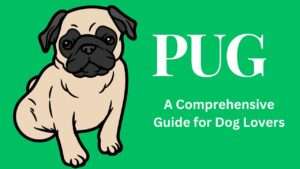
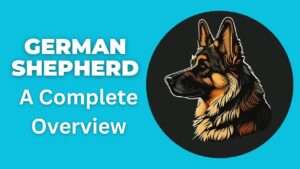





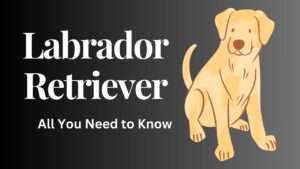



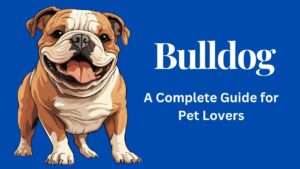
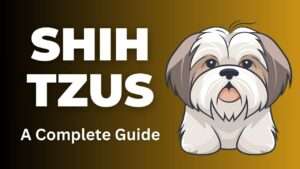
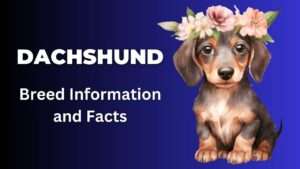
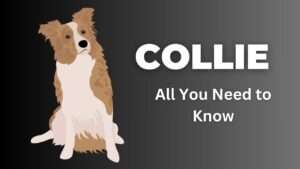







+ There are no comments
Add yours